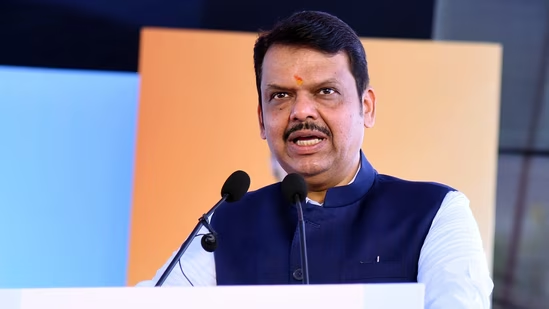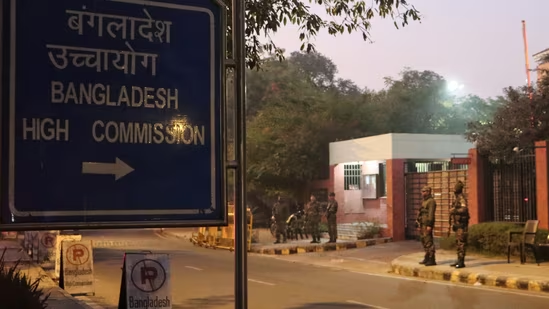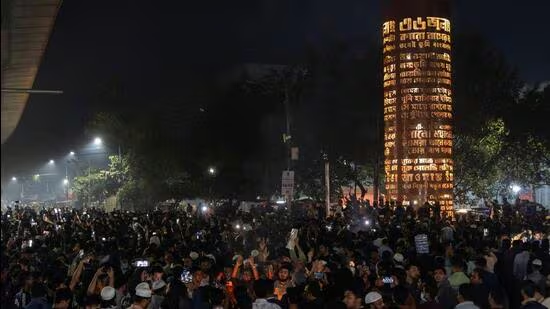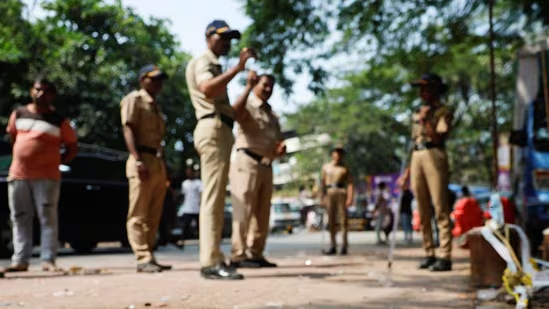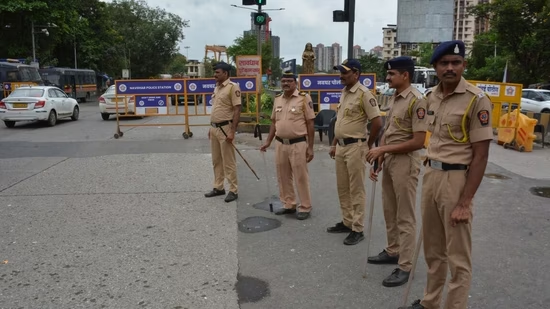Discover the dramatic fall of Sheikh Hasina, as Bangladesh faces chaos and a student-led fight for democracy shapes the nation’s future.
As Sheikh Hasina, once the formidable Prime Minister of Bangladesh, watches the chaos unfolding from her hidden refuge in India, her thoughts must be racing. Once an unchallenged leader, she is now a fugitive, driven out by the very forces she sought to control. The streets of Bangladesh, once under her tight grip, are now engulfed in violence and disorder, a stark contrast to the order she once imposed. It is tempting to wonder if she regrets her decisions—if only she had listened to the students’ demands earlier, if only she had refrained from unleashing her loyalists on protesters, if only she had stepped down voluntarily. Yet such reflections are likely fleeting in a mind so accustomed to power.
The psychology of dictators rarely allows for introspection. A ruler who clings to power as fiercely as Hasina did is not prone to second-guessing her actions, even as her world collapses around her. Now, with economist Muhammad Yunus, a man she once sought to imprison, sworn in as the head of a caretaker government, Hasina’s fall from grace is complete. The youth, whose voices she tried so hard to silence, have instead elevated Yunus to power, showcasing the strength of a united populace against authoritarian rule.
The destruction of the statue of Sheikh Mujibur Rahman, Hasina’s father and the revered founder of Bangladesh, must be particularly jarring for her. This act of desecration is not just an attack on a monument but a symbolic dismantling of the legacy she tried so hard to control. Hasina’s relentless pursuit of consolidating her father’s legacy as her own—of turning Sheikh Mujibur Rahman into an emblem of the Awami League alone—has backfired spectacularly. The irony is bitter: in her quest to monopolize her father’s memory, she may have tarnished it irreparably.
The term “Razakar,” once a slur directed at Hasina’s opponents, now reverberates back at her. The slogan, “We are Razakar? Who says? Dictator!” has become a haunting reminder of the miscalculations that led to her downfall. Her attempt to discredit the democratic movement by branding dissenters as traitors has only solidified their resolve and turned public opinion against her.
Yet, despite Hasina’s departure, the violence in Bangladesh has not abated. The flames that consumed the country before her ouster have only spread further, targeting those associated with the Awami League and the former government. The destruction of Sheikh Mujibur Rahman’s statue is just one of many violent acts perpetrated in the wake of Hasina’s flight. Hotels have been burned down, killing innocent civilians, and widespread violence has erupted across the nation. Reports indicate that Hindu temples, homes, and businesses have been particularly targeted, reflecting a broader societal breakdown.
The violence that has engulfed Bangladesh is not simply a reaction to Hasina’s rule; it is a continuation of the anger and frustration that her government’s oppression has fueled. The student-led movement, known as “Students Against Discrimination,” which was at the forefront of the protests, has condemned the ongoing violence. Leaders from various sectors, including Jamaat-e-Islami and former Prime Minister Khaleda Zia, have called for an end to the bloodshed, but their pleas seem to fall on deaf ears. The violence has taken on a life of its own, fed by years of pent-up anger and a lack of effective governance.
It is important to recognize that the violent backlash against those associated with the Awami League is not a justified response to the atrocities committed under Hasina’s regime. While the anger toward those who participated in the government’s repression is understandable, the indiscriminate violence that has followed is not. The movement that began as a fight against dictatorship and violence is now at risk of being overshadowed by the very chaos it sought to end.
The role of the military in this ongoing violence cannot be ignored. With the government in disarray, it is the army’s responsibility to restore order and protect civilians. However, the military’s failure to act decisively raises questions about its intentions. If the army is allowing the violence to continue as an expression of public anger, it must be held accountable for the resulting bloodshed. The situation in Bangladesh is teetering on the brink, and only a firm and impartial intervention can prevent further descent into chaos.
However, it is crucial not to misinterpret the nature of the mass movement that toppled Sheikh Hasina. This was not a movement orchestrated by Islamists or anti-India forces, nor was it an attempt to establish an Islamic state in Bangladesh. Rather, it was a genuine struggle for democracy, led by a generation of youth and students who have historically been the vanguard of Bangladesh’s democratic movements. From the language movement of 1952 to the independence struggle of 1971, students have played a pivotal role in shaping the country’s political landscape. The current uprising is a continuation of this tradition, a testament to the enduring spirit of resistance among Bangladesh’s youth.
Sheikh Hasina’s 15-year reign was marked by repression and the suppression of dissent. Critics of her government faced severe consequences, from imprisonment to enforced disappearances. Speaking out against her rule was perilous, even for those living abroad, as their families in Bangladesh were often targeted in retaliation. The students who took to the streets did so at great personal risk, facing bullets and brutal crackdowns. Yet, they persisted, driven by a desire for freedom and democracy. Their courage and determination cannot be understated.
In the wake of Hasina’s departure, the students who led the movement have remained steadfast in their commitment to non-violence. They have condemned the post-August 5 violence, refused to justify it as a reaction to past injustices, and have even gone so far as to return weapons looted during the attack on parliament. Their actions have protected religious minorities and demonstrated a commitment to the principles of the movement, even in the face of overwhelming chaos.
Nonetheless, the military has not been able to co-opt this revolution, thanks in large part to the students’ vigilance. It was at the students’ insistence that Muhammad Yunus, a symbol of integrity and moral leadership, assumed the role of interim leader. To dismiss the student-led movement as a mere conspiracy or to attribute its success to external forces would be a grave injustice. The movement is a genuine expression of the Bangladeshi people’s desire for democracy and freedom, and its success belongs to the students who risked everything to make it happen.
In India, some have expressed sympathy for Sheikh Hasina, arguing that her leadership brought economic progress and maintained secularism in Bangladesh. However, economic prosperity alone cannot justify the erosion of democratic freedoms. People do not live by bread alone; they crave the dignity and autonomy that come with democracy. For 15 years, Hasina denied her people these fundamental rights, turning elections into a farce and stifling political dissent. The youth who now fill the streets of Dhaka and other cities have never known what it means to vote freely. Their protests are a rejection of a system that has denied them their most basic democratic rights.
In a world where authoritarianism is on the rise, the struggle of Bangladesh’s students is a powerful reminder that the human spirit’s yearning for freedom and democracy cannot be easily extinguished. Their movement has forced a dictator to flee and created a path for a more just and democratic society. The future of Bangladesh now depends on whether the broader society will heed the students’ call for an inclusive, non-discriminatory future. As Muhammad Yunus rightly pointed out, the immediate priority must be to restore order. However, the ultimate goal must be to fulfill the vision of a society where all citizens, regardless of their beliefs or affiliations, can live free from fear and discrimination.
The journey ahead is fraught with challenges, but if the people of Bangladesh can come together to build on the foundations laid by the student movement, there is hope for a brighter, more democratic future. The echoes of their struggle serve as a beacon for all who cherish freedom, reminding us that the fight for democracy is never in vain.








